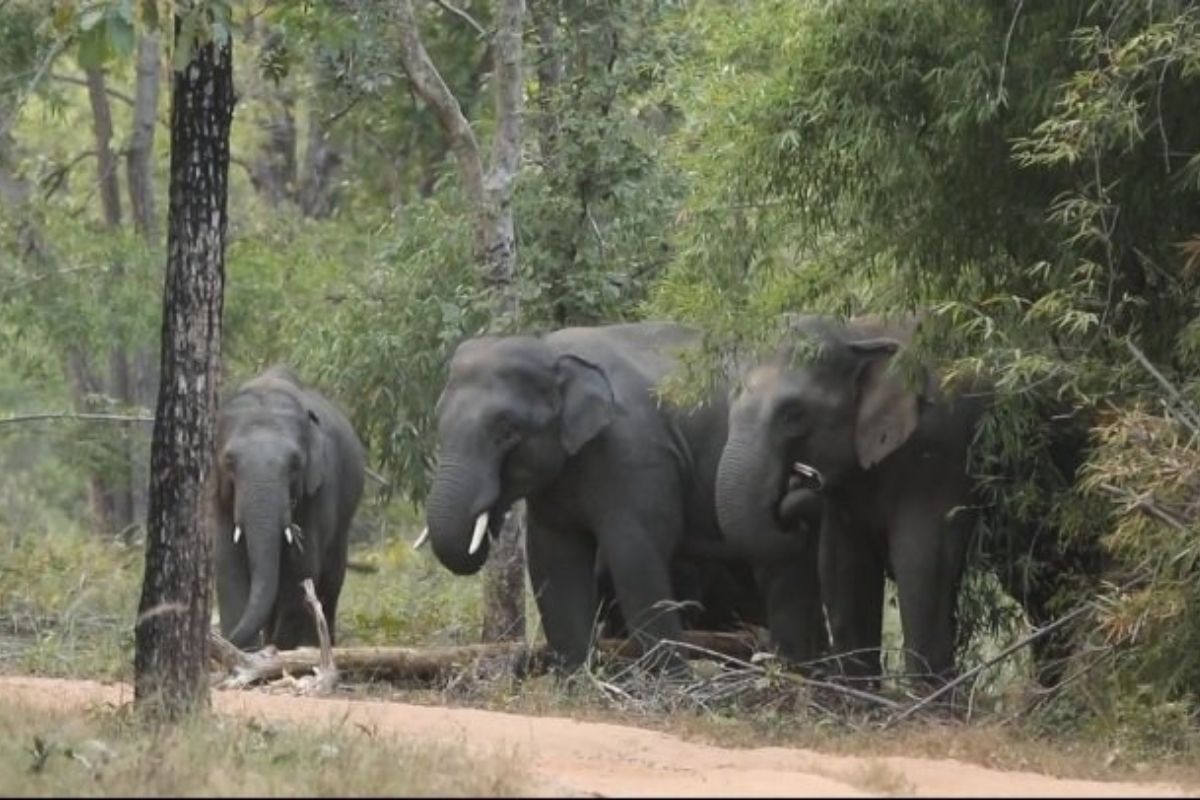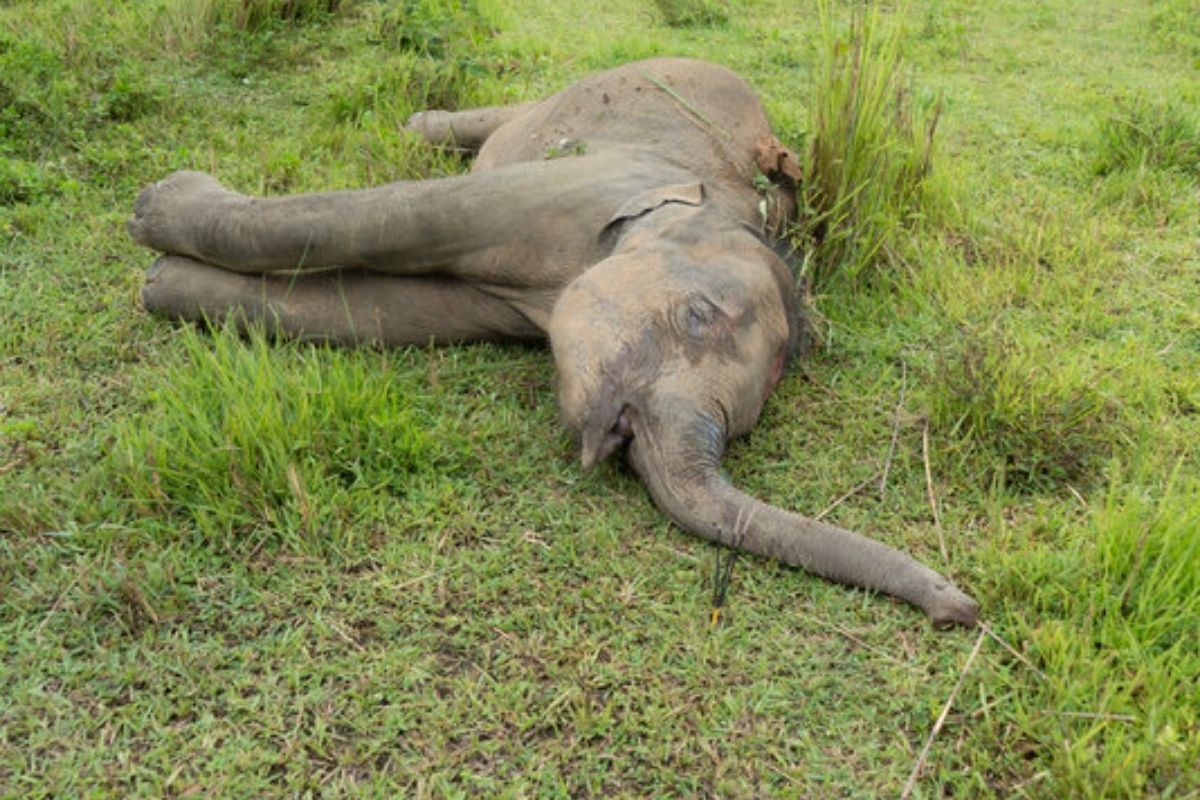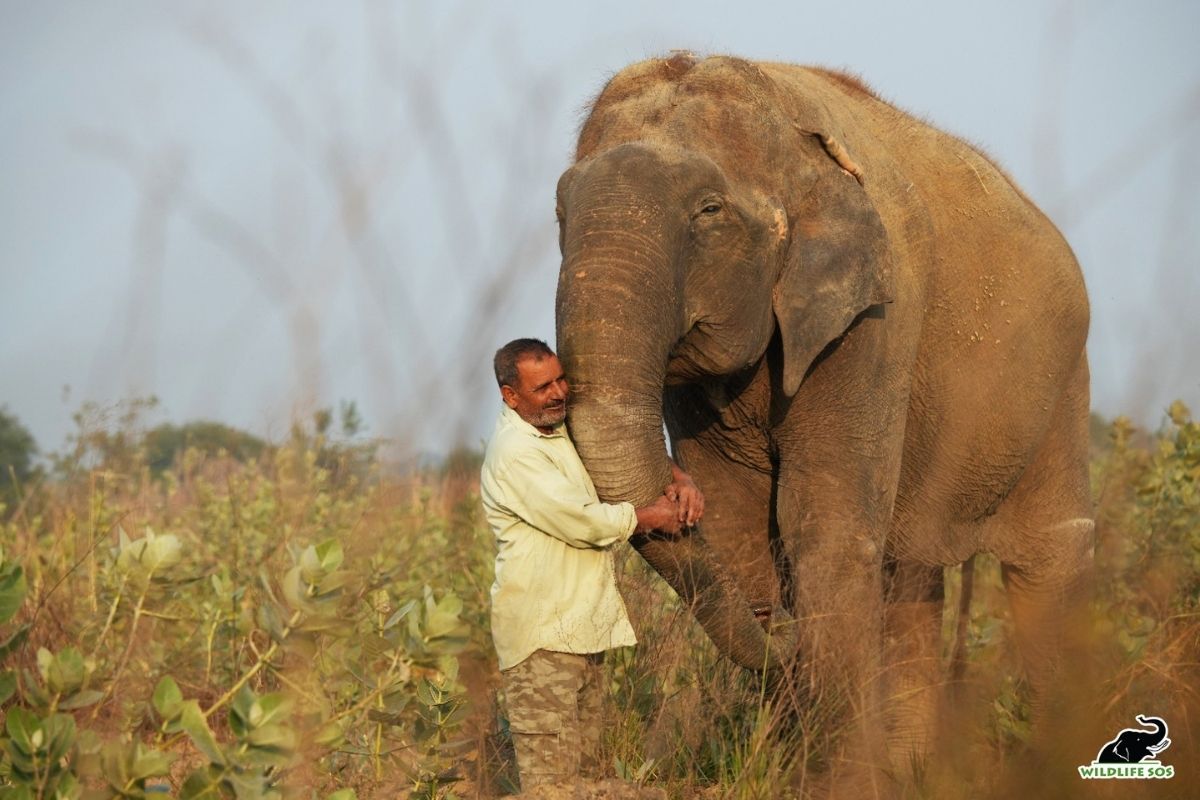In late October 2024, a shocking incident in Madhya Pradesh’s Bandhavgarh Tiger Reserve raised concerns among conservationists and locals over the unexpected deaths of ten elephants. Bandhavgarh, renowned for its biodiversity and wildlife, has long represented India’s commitment to preserving its natural heritage.
The incident began on October 29, when forest officials found four dead elephants, marking the start of an investigation. As more elephants were found dead, the situation intensified, prompting an immediate inquiry into the cause. Initial findings suggested a link to kodo millet, a staple crop in the region.
The tragic event highlighted the ongoing struggle between human communities and wildlife. In areas where agricultural expansion encroaches on habitats, human-wildlife conflict incidents have increased. With local communities facing crop damage and safety challenges due to wildlife interactions, the deaths of these elephants sparked a conversation about effective conflict management strategies and ensuring coexistence.

Timeline of events
October 29, 2024
The crisis began when forest officials found four dead elephants in the Sankhani and Bakeli areas of the Bandhavgarh Tiger Reserve, prompting immediate concern and an investigation into their unusual deaths. As wildlife officials arrived, they began to assess the elephants’ condition, noting any visible injuries or signs of distress.
October 30, 2024
The situation escalated when forest officials found four more dead elephants in the same reserve. This led the Madhya Pradesh government to act swiftly. A high-level inquiry team of forest officials and veterinarians was formed to investigate the cause of death, focusing on potential health threats and environmental factors.
October 31, 2024
As investigations continued, two more elephants were found dead, bringing the total death toll to ten. Initial autopsy reports revealed Kodo millet in the elephants’ stomachs. Given the area’s agricultural practices, experts suspected toxins from the millet could be responsible for the deaths.
November 1, 2024
Wildlife veterinarians conducted postmortem examinations of the deceased elephants. Preliminary findings confirmed mycotoxins in some bodies. Certain fungi produce mycotoxins, toxic substances that can contaminate food and pose health risks. Indian ecologist Raman Sukumar, specializing in Asian elephant research, stated, “Fungal-infected millet grain can produce toxins like aflatoxin or ergot, which are fatal to animals.” Experts emphasized the need for further analyses to determine the specific toxins and whether the poisoning was accidental or intentional.
November 2, 2024
In response to the crisis and public concern, the Union Environment Ministry announced an independent Wildlife Crime Control Bureau (WCCB) team to investigate the elephant deaths. This team aimed to determine if the elephants had been poisoned or accidentally ingested contaminated food, addressing local communities’ fears about their safety and the environment.
November 3, 2024
Amid intensified public scrutiny, Chief Minister Mohan Yadav suspended two senior forest officials for negligence in managing the crisis. This decision highlighted the situation’s seriousness and the government’s commitment to addressing wildlife management issues. Yadav stated a comprehensive review of forest management practices would be conducted to prevent similar incidents.
November 4, 2024
Investigators confirmed mycotoxins in the elephants, indicating they ingested large quantities of contaminated Kodo millet. The focus shifted to understanding how this contamination occurred and whether there were lapses in agricultural practices. Ongoing investigations aimed to pinpoint the cause of death and identify measures to prevent future occurrences, emphasizing the importance of monitoring agricultural safety for human and animal health.
Initial findings, investigations and govt response
As the investigation progressed, veterinarians highlighted a potential link between the deaths and kodo millet (Paspalum scrobiculatum), a locally cultivated grain known for its resilience and nutritional benefits.
Principal Chief Conservator of Forests (Wildlife) Vijay N Ambade indicated that “mycotoxins associated with kodo millet” could be a key factor in the elephants’ demise. Mycotoxins, poisonous byproducts of specific fungi, raised concerns about local agricultural practices.
The ministry noted initial reports suggested poisoning, but a comprehensive inquiry, including postmortem and toxicological analyses, would determine the final cause of death. Wildlife expert Ajay Dubey echoed these concerns, stating,
“Kodo millet is a staple crop in tribal areas, especially Dindori, Mandla, Shahdol, and Katni. In the forest, monkeys consume it in large quantities, but they are healthy, so it seems like a case of poisoning.”
After tragic events affecting wildlife and local communities, Chief Minister Yadav announced a substantial increase in compensation for families affected by wild animal attacks, raising it from ₹8 lakhs to ₹25 lakhs (approximately $9,600 to $30,400). This decision followed reports of two men being killed in separate elephant incidents in the same district, underscoring the government’s commitment to the safety and welfare of local residents.

CM stated that an initial report from a three-member team sent to the Reserve indicated no evidence of pesticide use on crops or the involvement of any third party. “However, the post-mortem reports are expected within the next two to three days,” he added.
The Chief Minister revealed plans to establish a task force for developing a comprehensive, long-term strategy for managing elephant herds in the State. “This strategy will incorporate the best practices from other States with significant elephant populations, such as Karnataka, Kerala, and Assam. Our officials will be sent to these regions to study methods based on the principle of coexistence, ensuring that the lives of those residing in both buffer and core areas are minimally impacted by elephant movements,” Mr. Yadav explained.
Kodo Millet toxins suspected in Elephant deaths
Kodo millet, or cow grass, is a hardy cereal grain grown mainly in Central India, especially on the Deccan Plateau. It’s gained popularity due to its nutritional benefits and resilience to climate challenges.
High in fibre, Kodo millet supports health by managing asthma, high blood pressure, and migraines. For many tribal and disadvantaged communities in India, it’s a staple food due to its nutritional value and ease of cultivation.
Recent events in Bandhavgarh have sparked discussions about Kodo millet safety. A 2020 study in ‘The Pharma Innovation Journal’ recounted an incident in Chhattisgarh’s Durg district where cattle suffered convulsions, dizziness, limb contractions, and fatalities after consuming kodo millet infested with Claviceps fungi, which produce harmful mycotoxins.
The elephant deaths have heightened concerns about human-elephant conflict. Local communities, already facing agriculture and habitat encroachment challenges, are anxious as reports indicated three elephants had killed two people in separate incidents shortly after the initial deaths.
Experts emphasize a multifaceted approach to prevent future incidents, including robust monitoring systems for agricultural produce and improved human-wildlife conflict management protocols.
Aritra Kshettry, national lead for elephant conservation at WWF-India, noted that while elephant poisoning is rare, threats from railway accidents, electrocutions, and poaching are significant.
The deaths of ten elephants in Bandhavgarh highlight the complexities of wildlife conservation and local community challenges. As investigations continue, the government and conservationists must prioritize the safety of residents and elephants.
Support us to keep independent environmental journalism alive in India.
Keep Reading
Govt shelves elephant census, population drops 20% in 5 years
Wildlife SOS mourns passing of Suzy, 74, oldest rescued Elephant
Asian Elephants display complex mourning rituals similar to humans: study
Asian Elephant populations threatened by rapid ecosystem decline
Follow Ground Report on X, Instagram and Facebook for environmental and underreported stories from the margins. Give us feedback on our email id greport2018@gmail.com.
Don’t forget to Subscribe to our weekly newsletter, Join our community on WhatsApp, and Follow our YouTube Channel for video stories.










